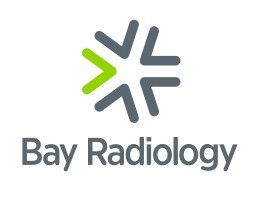Bay of Plenty, Waikato > Private Hospitals & Specialists >
Bay Radiology
Private Service, Radiology, Pregnancy Ultrasound
Today
Tauranga Hospital
Description
Bay Radiology provides world class imaging services that deliver the best care for patients and fast, accurate and comprehensive diagnostic information for the clinicians looking after you.
We provide a range of imaging services to the community from our locations in Tauranga, Mt Maunganui, Pāpāmoa, Katikati, Whakatāne and Matamata.
| Xray | General US | Pregnancy US | MRI | PET-CT | CT | CT Colonography | Mammography | BreastScreen Aotearoa | Image Guided Injections | Fluoroscopy | Bone Densitometry | PRP | |
| Tauranga Hospital | ● | ||||||||||||
| Mt Maunganui | ● | ● | ● | ● | ● | ● | ● | ● | |||||
| Grace Hospital, Tauranga | ● | ● | ● | ● | ● | ● | ● | ● | ● | ||||
| 17th Avenue | ● | ● | ● | ● | ● | ● | ● | ● | ● | ● | |||
| Pāpāmoa | ● | ● | ● | ● | ● | ● | ● | ● | |||||
| Katikati | ● | ||||||||||||
| Whakatāne | ● | ● | ● | ● | ● | ● | |||||||
| The Doctors Tauranga | ● | ● | |||||||||||
| Matamata | ● | ● | ● | ||||||||||
| Accident & Healthcare | ● |
- diagnose disease states, such as cancer or heart disease
- show the extent of injury to body structures
- to aid in interventional procedures, such as angiography.
- Medical Radiation Technologists (MRTs) or Radiographers perform your X-ray, barium and mammography examinations.
- Sonographers are MRTs who perform your ultrasound examinations.
- Radiologists are specialist doctors who read and understand your films. They will also be involved if you have an intravenous urogram (IVU), barium study, mammogram and a number of other ultrasound procedures. They interpret the results of the images and send them to your doctor.
Staff
Bay Radiology has a fantastic team of radiologists, clinical and administrative staff who are dedicated not only to their profession but to providing a professional and caring service to our referrers and clients. Our radiologists have a wealth of experience and expertise in all areas of radiology (see under Consultants).
Regional Manager: Nicola Daisley
Consultants
-

Dr Matt Andrews
Radiologist
-

Dr Phil Borrie
Radiologist
-
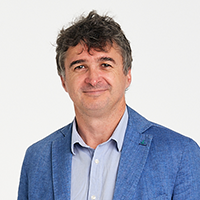
Dr Richard Downing
Radiologist
-
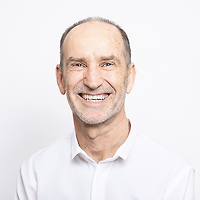
Dr Gerard Eagar
Radiologist
-

Dr Logan Fletcher
Radiologist
-
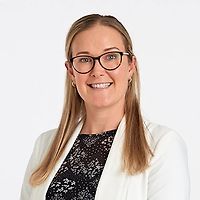
Dr Gracie Keown
Radiologist
-

Dr Gayani Mallawa Arachchi
Radiologist
-
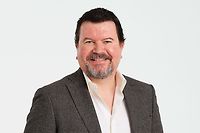
Dr Guy Mason
Radiologist
-

Dr Louise Moore
Radiologist
-

Dr Brendan Murray
Radiologist
-

Dr Liam Olsen
Radiologist
-
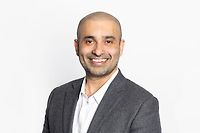
Dr Sharath Prakash
Radiologist
-

Dr Amanda Ragg
Radiologist
-

Dr Kunaal Rajpal
Managing Radiologist
-

Dr Sam Toner
Radiologist
-

Dr Duncan Wood
Radiologist
-

Dr Elton Zheng
Radiologist
Ages
Youth / Rangatahi, Adult / Pakeke, Older adult / Kaumātua
How do I access this service?
Make an appointment
Request an appointment here
Referral
A referral from a suitably qualified referrer is necessary for most radiology type examinations. Find information for referrers here.
At Bay Radiology there are two examinations for which you can self-refer, a screening mammogram (if you are over 40 years of age and do not have any current symptoms of concern) and a Bone Density scan.
Fees and Charges Categorisation
Fees apply
Fees and Charges Description
Hours
Tauranga Hospital
| Mon – Fri | 8:00 AM – 5:30 PM |
|---|
Public Holidays: Closed Good Friday (18 Apr), Easter Sunday (20 Apr), Easter Monday (21 Apr), ANZAC Day (25 Apr), King's Birthday (2 Jun), Matariki (20 Jun), Labour Day (27 Oct), Waitangi Day (6 Feb).
Procedures / Treatments
An X-ray is a high frequency, high energy wave form. It cannot be seen with the naked eye, but can be picked up on photographic film. Although you may think of an X-ray as a picture of bones, a trained observer can also see air spaces, like the lungs (which look black) and fluid (which looks white, but not as white as bones). What to expect? You will have all metal objects removed from your body. You will be asked to remain still in a specific position and hold your breath on command. There are staff present, but they will not necessarily remain in the room, but will speak with you via an intercom system and will be viewing the procedure constantly through a windowed control room. The examination time will vary depending on the type of procedure required, but as a rule it will take around 30 minutes. Read more about x-ray imaging here
An X-ray is a high frequency, high energy wave form. It cannot be seen with the naked eye, but can be picked up on photographic film. Although you may think of an X-ray as a picture of bones, a trained observer can also see air spaces, like the lungs (which look black) and fluid (which looks white, but not as white as bones). What to expect? You will have all metal objects removed from your body. You will be asked to remain still in a specific position and hold your breath on command. There are staff present, but they will not necessarily remain in the room, but will speak with you via an intercom system and will be viewing the procedure constantly through a windowed control room. The examination time will vary depending on the type of procedure required, but as a rule it will take around 30 minutes. Read more about x-ray imaging here
In ultrasound, a beam of sound at a very high frequency (that cannot be heard) is sent into the body from a small vibrating crystal in a hand-held scanner head. When the beam meets a surface between tissues of different density, echoes of the sound beam are sent back into the scanner head. The time between sending the sound and receiving the echo back is fed into a computer, which in turn creates an image that is projected on a television screen. Ultrasound is a very safe type of imaging; this is why it is so widely used during pregnancy. Doppler ultrasound A Doppler study is a noninvasive test that can be used to evaluate blood flow by bouncing high-frequency sound waves (ultrasound) off red blood cells. The Doppler Effect is a change in the frequency of sound waves caused by moving objects. A Doppler study can estimate how fast blood flows by measuring the rate of change in its pitch (frequency). A Doppler study can help diagnose bloody clots, heart and leg valve problems and blocked or narrowed arteries. What to expect? After lying down, the area to be examined will be exposed. Generally a contact gel will be used between the scanner head and skin. The scanner head is then pressed against your skin and moved around and over the area to be examined. At the same time the internal images will appear onto a screen. Read more about ultrasound here Read about pregnancy ultrasound here
In ultrasound, a beam of sound at a very high frequency (that cannot be heard) is sent into the body from a small vibrating crystal in a hand-held scanner head. When the beam meets a surface between tissues of different density, echoes of the sound beam are sent back into the scanner head. The time between sending the sound and receiving the echo back is fed into a computer, which in turn creates an image that is projected on a television screen. Ultrasound is a very safe type of imaging; this is why it is so widely used during pregnancy. Doppler ultrasound A Doppler study is a noninvasive test that can be used to evaluate blood flow by bouncing high-frequency sound waves (ultrasound) off red blood cells. The Doppler Effect is a change in the frequency of sound waves caused by moving objects. A Doppler study can estimate how fast blood flows by measuring the rate of change in its pitch (frequency). A Doppler study can help diagnose bloody clots, heart and leg valve problems and blocked or narrowed arteries. What to expect? After lying down, the area to be examined will be exposed. Generally a contact gel will be used between the scanner head and skin. The scanner head is then pressed against your skin and moved around and over the area to be examined. At the same time the internal images will appear onto a screen. Read more about ultrasound here Read about pregnancy ultrasound here
In ultrasound, a beam of sound at a very high frequency (that cannot be heard) is sent into the body from a small vibrating crystal in a hand-held scanner head. When the beam meets a surface between tissues of different density, echoes of the sound beam are sent back into the scanner head. The time between sending the sound and receiving the echo back is fed into a computer, which in turn creates an image that is projected on a television screen. Ultrasound is a very safe type of imaging; this is why it is so widely used during pregnancy.
Doppler ultrasound
A Doppler study is a noninvasive test that can be used to evaluate blood flow by bouncing high-frequency sound waves (ultrasound) off red blood cells. The Doppler Effect is a change in the frequency of sound waves caused by moving objects. A Doppler study can estimate how fast blood flows by measuring the rate of change in its pitch (frequency). A Doppler study can help diagnose bloody clots, heart and leg valve problems and blocked or narrowed arteries.
What to expect?
After lying down, the area to be examined will be exposed. Generally a contact gel will be used between the scanner head and skin. The scanner head is then pressed against your skin and moved around and over the area to be examined. At the same time the internal images will appear onto a screen.
Read more about ultrasound here
Read about pregnancy ultrasound here
With CT you can differentiate many more things than with a normal X-ray. A CT image is created by using an X-ray beam, which is sent through the body from different angles, and by using a complicated mathematical process the computer of the CT is able to produce an image. This allows cross-sectional images of the body without cutting it open. The CT is used to view all body structures but especially soft tissue such as body organs (heart, lungs, liver etc.). What to expect? You will have all metal objects removed from your body. You will lie down on a narrow padded moveable table that will be slid into the scanner, through a circular opening. You will feel nothing while the scan is in progress, but some people can feel slightly claustrophobic or closed in, whilst inside the scanner. You will be asked to remain still and hold your breath on command. There are staff present, but they will not necessarily remain in the room, but will speak with you via an intercom system and will be viewing the procedure constantly through a windowed control room, from where they will run the scanner. Some procedures will require Contrast Medium. Contrast medium is a substance that makes the image of the CT or MRI clearer. Contrast medium can be given by mouth, rectally, or by injection into the bloodstream.v The scan time will vary depending on the type of examination required, but as a rule it will take around 30 minutes. Read more about CT scanning here
With CT you can differentiate many more things than with a normal X-ray. A CT image is created by using an X-ray beam, which is sent through the body from different angles, and by using a complicated mathematical process the computer of the CT is able to produce an image. This allows cross-sectional images of the body without cutting it open. The CT is used to view all body structures but especially soft tissue such as body organs (heart, lungs, liver etc.). What to expect? You will have all metal objects removed from your body. You will lie down on a narrow padded moveable table that will be slid into the scanner, through a circular opening. You will feel nothing while the scan is in progress, but some people can feel slightly claustrophobic or closed in, whilst inside the scanner. You will be asked to remain still and hold your breath on command. There are staff present, but they will not necessarily remain in the room, but will speak with you via an intercom system and will be viewing the procedure constantly through a windowed control room, from where they will run the scanner. Some procedures will require Contrast Medium. Contrast medium is a substance that makes the image of the CT or MRI clearer. Contrast medium can be given by mouth, rectally, or by injection into the bloodstream.v The scan time will vary depending on the type of examination required, but as a rule it will take around 30 minutes. Read more about CT scanning here
With CT you can differentiate many more things than with a normal X-ray. A CT image is created by using an X-ray beam, which is sent through the body from different angles, and by using a complicated mathematical process the computer of the CT is able to produce an image. This allows cross-sectional images of the body without cutting it open. The CT is used to view all body structures but especially soft tissue such as body organs (heart, lungs, liver etc.).
What to expect?
You will have all metal objects removed from your body. You will lie down on a narrow padded moveable table that will be slid into the scanner, through a circular opening.
You will feel nothing while the scan is in progress, but some people can feel slightly claustrophobic or closed in, whilst inside the scanner. You will be asked to remain still and hold your breath on command. There are staff present, but they will not necessarily remain in the room, but will speak with you via an intercom system and will be viewing the procedure constantly through a windowed control room, from where they will run the scanner.
Some procedures will require Contrast Medium. Contrast medium is a substance that makes the image of the CT or MRI clearer. Contrast medium can be given by mouth, rectally, or by injection into the bloodstream.v
The scan time will vary depending on the type of examination required, but as a rule it will take around 30 minutes.
Read more about CT scanning here
An MRI machine does not work like an X-ray or CT; it is used for exact images of internal organs and body structures. This method delivers clear images without the exposure of radiation. The procedure uses a combination of magnetic fields and radio waves which results in an image being made using the MRI’s computer. What to expect? You will have all metal objects removed from your body. You will lie down on a narrow padded moveable table that will be slid into the scanner, through a circular opening. You will feel nothing while the scan is in progress, but some people can feel slightly claustrophobic or closed in, whilst inside the scanner. You will be asked to remain still and hold your breath on command. There are staff present, but they will not necessarily remain in the room, but will speak with you via an intercom system and will be viewing the procedure constantly through a windowed control room, from where they will run the scanner. Some procedures will require Contrast Medium. Contrast medium is a substance that makes the image of the CT or MRI clearer. Contrast can be given by mouth, rectally, or by injection into the bloodstream. The scan time will vary depending on the type of examination required, but as a rule it will take around 30 minutes. Read more about MRI here
An MRI machine does not work like an X-ray or CT; it is used for exact images of internal organs and body structures. This method delivers clear images without the exposure of radiation. The procedure uses a combination of magnetic fields and radio waves which results in an image being made using the MRI’s computer. What to expect? You will have all metal objects removed from your body. You will lie down on a narrow padded moveable table that will be slid into the scanner, through a circular opening. You will feel nothing while the scan is in progress, but some people can feel slightly claustrophobic or closed in, whilst inside the scanner. You will be asked to remain still and hold your breath on command. There are staff present, but they will not necessarily remain in the room, but will speak with you via an intercom system and will be viewing the procedure constantly through a windowed control room, from where they will run the scanner. Some procedures will require Contrast Medium. Contrast medium is a substance that makes the image of the CT or MRI clearer. Contrast can be given by mouth, rectally, or by injection into the bloodstream. The scan time will vary depending on the type of examination required, but as a rule it will take around 30 minutes. Read more about MRI here
An MRI machine does not work like an X-ray or CT; it is used for exact images of internal organs and body structures. This method delivers clear images without the exposure of radiation.
The procedure uses a combination of magnetic fields and radio waves which results in an image being made using the MRI’s computer.
What to expect?
You will have all metal objects removed from your body. You will lie down on a narrow padded moveable table that will be slid into the scanner, through a circular opening.
You will feel nothing while the scan is in progress, but some people can feel slightly claustrophobic or closed in, whilst inside the scanner. You will be asked to remain still and hold your breath on command. There are staff present, but they will not necessarily remain in the room, but will speak with you via an intercom system and will be viewing the procedure constantly through a windowed control room, from where they will run the scanner.
Some procedures will require Contrast Medium. Contrast medium is a substance that makes the image of the CT or MRI clearer. Contrast can be given by mouth, rectally, or by injection into the bloodstream.
The scan time will vary depending on the type of examination required, but as a rule it will take around 30 minutes.
Read more about MRI here
A positron emission tomography (PET) scan is an imaging test that can help reveal how your tissues and organs are functioning. The PET scan uses very small, safe amounts of radioactive tracers, and is used most frequently to detect and assess disease within the body. The PET images are fused with anatomical CT images and viewed by a radiologist who produces a detailed report. PET-CT is a very safe and routine procedure. Read more about PET-CT here.
A positron emission tomography (PET) scan is an imaging test that can help reveal how your tissues and organs are functioning. The PET scan uses very small, safe amounts of radioactive tracers, and is used most frequently to detect and assess disease within the body. The PET images are fused with anatomical CT images and viewed by a radiologist who produces a detailed report. PET-CT is a very safe and routine procedure. Read more about PET-CT here.
A positron emission tomography (PET) scan is an imaging test that can help reveal how your tissues and organs are functioning. The PET scan uses very small, safe amounts of radioactive tracers, and is used most frequently to detect and assess disease within the body. The PET images are fused with anatomical CT images and viewed by a radiologist who produces a detailed report. PET-CT is a very safe and routine procedure.
Read more about PET-CT here.
A mammogram is a special type of x-ray used only for the breast. Mammography can be used either to look for very early breast cancer in women without breast symptoms (screening) or to examine women who do have breast symptoms (diagnostic). What to expect? You will need to undress from the waist up. One of your breasts will be positioned between two plastic plates which will flatten the breast slightly. Most women find that this is a bit uncomfortable, but not painful. Generally two x-rays are taken of each breast. It is also useful to compare the results with earlier examinations and you should take any previous mammography results with you. Read more about mammography here
A mammogram is a special type of x-ray used only for the breast. Mammography can be used either to look for very early breast cancer in women without breast symptoms (screening) or to examine women who do have breast symptoms (diagnostic). What to expect? You will need to undress from the waist up. One of your breasts will be positioned between two plastic plates which will flatten the breast slightly. Most women find that this is a bit uncomfortable, but not painful. Generally two x-rays are taken of each breast. It is also useful to compare the results with earlier examinations and you should take any previous mammography results with you. Read more about mammography here
A mammogram is a special type of x-ray used only for the breast. Mammography can be used either to look for very early breast cancer in women without breast symptoms (screening) or to examine women who do have breast symptoms (diagnostic).
What to expect?
You will need to undress from the waist up. One of your breasts will be positioned between two plastic plates which will flatten the breast slightly. Most women find that this is a bit uncomfortable, but not painful. Generally two x-rays are taken of each breast. It is also useful to compare the results with earlier examinations and you should take any previous mammography results with you.
Read more about mammography here
DEXA (which stands for dual energy x-ray absorptiometry) scanning uses special x-rays to measure the density of your bones. The density of your bones will show how strong they are. The exposure to x-rays is very low and is similar to what you would receive on a long distance plane flight. What to expect? You will lie very still on a padded table for 5-10 minutes while the arm of the machine passes over the area to be measured (usually the lower spine and hip, although the forearm can also be measured). This is quite painless. You can remain in your normal clothing, although you may have to take off anything with large buttons, buckles or metal zips. Read more about bone densitometry and body composition here.
DEXA (which stands for dual energy x-ray absorptiometry) scanning uses special x-rays to measure the density of your bones. The density of your bones will show how strong they are. The exposure to x-rays is very low and is similar to what you would receive on a long distance plane flight. What to expect? You will lie very still on a padded table for 5-10 minutes while the arm of the machine passes over the area to be measured (usually the lower spine and hip, although the forearm can also be measured). This is quite painless. You can remain in your normal clothing, although you may have to take off anything with large buttons, buckles or metal zips. Read more about bone densitometry and body composition here.
DEXA (which stands for dual energy x-ray absorptiometry) scanning uses special x-rays to measure the density of your bones. The density of your bones will show how strong they are. The exposure to x-rays is very low and is similar to what you would receive on a long distance plane flight.
What to expect?
You will lie very still on a padded table for 5-10 minutes while the arm of the machine passes over the area to be measured (usually the lower spine and hip, although the forearm can also be measured). This is quite painless.
You can remain in your normal clothing, although you may have to take off anything with large buttons, buckles or metal zips.
Read more about bone densitometry and body composition here.
Read about image guided injections here
Read about image guided injections here
Read about image guided injections here
Read about fluoroscopy here
Read about fluoroscopy here
Read about fluoroscopy here
Online Booking URL
Pharmacy
Find your nearest pharmacy here
Website
Contact Details
Tauranga Hospital
Bay of Plenty
-
Phone
0800 467 4260
Healthlink EDI
bayrad
Email
Website
Contact us online here
Book an appointment829 Cameron Road
Tauranga South
Tauranga
Bay of Plenty 3112
Street Address
829 Cameron Road
Tauranga South
Tauranga
Bay of Plenty 3112
Postal Address
PO Box 2636
Tauranga 3144
230 17th Avenue West, Tauranga
Bay of Plenty
-
Phone
0800 467 4260
Healthlink EDI
bayrad
Email
Website
Second Avenue Health Centre, 19 Second Avenue, Tauranga
Bay of Plenty
-
Phone
0800 467 4260
Healthlink EDI
bayrad
Email
Website
434 Devonport Road, Tauranga South, Tauranga
Bay of Plenty
-
Phone
07 578 0273
Healthlink EDI
bayrad
Email
Website
8 Grenada Street, Mount Maunganui
Bay of Plenty
-
Phone
0800 467 4260
Healthlink EDI
bayrad
Email
Website
Grace Hospital, Tauranga
Bay of Plenty
-
Phone
0800 467 4260
Healthlink EDI
bayrad
Email
Website
1 Tara Road, Pāpāmoa
Bay of Plenty
-
Phone
0800 467 4260
Healthlink EDI
bayrad
Email
Website
4 Clive Road, Katikati
Bay of Plenty
-
Phone
0800 467 4260
Healthlink EDI
bayrad
Email
Website
17 Pyne Street, Whakatāne
Bay of Plenty
-
Phone
0800 722 628
Healthlink EDI
bayrad
Email
Website
Pohlen Hospital Complex, 56 Rawhiti Avenue, Matamata
Waikato
-
Phone
07 981 4918
Healthlink EDI
bayrad
Email
Website
Was this page helpful?
This page was last updated at 3:05PM on March 11, 2025. This information is reviewed and edited by Bay Radiology.

